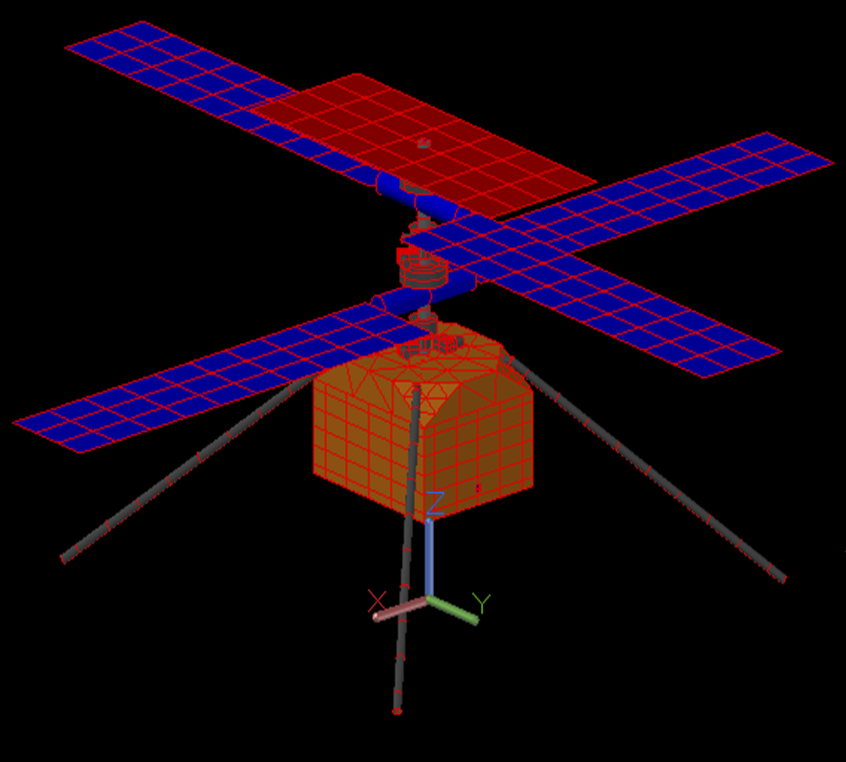 The Mars Helicopter will be a technology demonstration conducted during the Mars 2020 mission. The primary mission objective is to achieve several 90-second flights and capture visible light images via forward and nadir mounted cameras. These flights could possibly provide reconnaissance data for sampling site selection for other Mars surface missions. The helicopter is powered by a solar array, which stores energy in secondary batteries for flight operations, imaging, communications, and survival heating. The helicopter thermal design is driven by minimizing survival heater energy while maintaining compliance with allowable flight temperatures in a variable thermal environment. Due to the small size of the helicopter and its complex geometries, along with the fact that it operates with very low power and small margins, additional care had to be paid while planning thermal tests and designing the thermal system. A Thermal Desktop® model has been developed to predict the thermal system’s performance.
The Mars Helicopter will be a technology demonstration conducted during the Mars 2020 mission. The primary mission objective is to achieve several 90-second flights and capture visible light images via forward and nadir mounted cameras. These flights could possibly provide reconnaissance data for sampling site selection for other Mars surface missions. The helicopter is powered by a solar array, which stores energy in secondary batteries for flight operations, imaging, communications, and survival heating. The helicopter thermal design is driven by minimizing survival heater energy while maintaining compliance with allowable flight temperatures in a variable thermal environment. Due to the small size of the helicopter and its complex geometries, along with the fact that it operates with very low power and small margins, additional care had to be paid while planning thermal tests and designing the thermal system. A Thermal Desktop® model has been developed to predict the thermal system’s performance.
 A reduced-order model (ROM) created using Thermal Desktop® and Veritrek software has been utilized to explore the sensitivities of the thermal system’s drivers, such as electronics dissipations, gas gaps, heat transfer coefficients, etc., as well as to assess and verify the final thermal design. The results produced by Thermal Desktop® and Veritrek were utilized to study the effect of the major thermal design drivers and Mars environment on the Mars Helicopter in as little as 10 days, an effort that would have taken over 4 months using traditional thermal analysis techniques.
A reduced-order model (ROM) created using Thermal Desktop® and Veritrek software has been utilized to explore the sensitivities of the thermal system’s drivers, such as electronics dissipations, gas gaps, heat transfer coefficients, etc., as well as to assess and verify the final thermal design. The results produced by Thermal Desktop® and Veritrek were utilized to study the effect of the major thermal design drivers and Mars environment on the Mars Helicopter in as little as 10 days, an effort that would have taken over 4 months using traditional thermal analysis techniques.
Download the publication for more information on this work.
Congratulations to the team at Jet Propulsion Laboratory for successfully flying the Mars Helicopter, Ingenuity!
